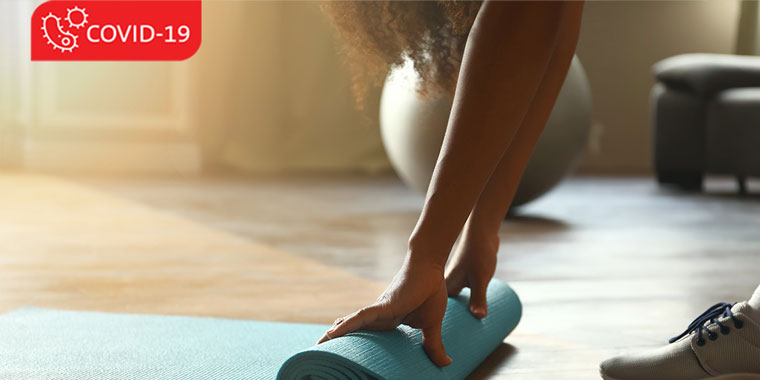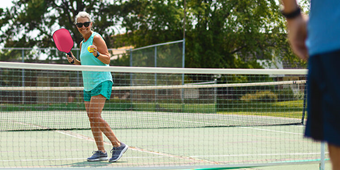How To Stay Active While Social Distancing

Find Your Perfect Match
Answer a few questions and we'll provide you with a list of primary care providers that best fit your needs.
Featured Videos
Even under normal circumstances, you look to your gym or fitness center as an escape – to work out your daily stresses, lighten your mood, boost your energy, and maintain good physical health.
Now, during the coronavirus pandemic, you may be working at home. Maybe your spouse, too. Plus, your kids are there studying – and going stir crazy with you. Or maybe you’re a senior, and you like to stay active.
But your gym just closed.
Now what?
First, take a deep breath. Karen E. Shafer, MD, JD, a board-certified family medicine and sports medicine physician with Premier Orthopedics, shared with Premier Health Now several ideas for maintaining your fitness and sanity in the new normal of social distancing.
“With the shutdown of businesses, schools, and gyms it is limiting as to what people can do,” she admits. But, she adds, “We need to get creative in terms of maintaining our physical activity.”
First, a word of caution. Even when exercising in your house or outdoors, Dr. Shafer says, follow the Centers for Disease Control and Prevention guidelines:
- Keep a distance of six feet from others
- Stay away from gatherings of more than 10 people
- Wash your hands frequently, for at least 20 seconds
Dr. Shafer offers the following suggestions for getting recommended amounts of exercise* as you stay close to home:
Body weight exercises: “These are good options to start with, without having to have any equipment at home,” Dr. Shafer says. For instance, squats, lunges, planks, pushups, crunches, and sit-ups (search online for guidance, if needed). Other good exercises, she adds, include high-knee exercises, mountain climbers, jumping jacks, and wall sits.
Online workouts: “There are endless amounts of online workouts, whether it’s using an app on your phone, or YouTube, or social media,” she says. You can search online for options for any fitness level or age. As an example, Dr. Shafer says, “For the elderly population, chair workouts are a really good option.”
“With the coronavirus situation, I’ve noticed that some personal trainers are putting free workouts on social media that don’t require much equipment and can easily be done at home.” Some gyms are doing the same, and fitness magazines post workouts on their websites.
Improvise: “People may be concerned, ‘I don’t have the free weights or equipment that I typically have available to me at the gym.’ So, just get creative. If you don’t have free weights, you can take a soup can or a filled water bottle and use that to add some weight to the activities you do at home.”
The great (uncrowded) outdoors: “At this point, it is still reasonable to go outside. So walking, running, even riding a bike in uncrowded locations is, at least at this point, a relatively low-risk activity.” Even states that have enacted shelter-in-place orders permit outdoor exercise. Again, stay at least six feet from other people. Keep in mind that people exercising vigorously, like runners, can emit germ-carrying droplets when they exhale.
For homebound kids: “Give them breaks from having to sit and do schoolwork,” Dr. Shafer advises. “These breaks should incorporate movement. That’s a good way of getting them back in and focused on doing their schoolwork.” (Good advice for adults working at home, too.)
For backyard activities, she suggests, “Minimize contact with neighbors. But kids at home can play with each other in their yard.” Another word of caution: While kicking a ball around the yard is a good way for your kids to stay active, playing catch poses the risk of hand-to-hand transfer of germs, she says.
Other good options for activity include obstacle courses, scavenger hunts, jumping jacks, running in place, dance parties, yoga, and stretching exercises.
And if your child is involved in athletics, she says, keep in mind that “sports is part of their identity. They may feel a bit disconnected from not being able to participate on a daily basis in those activities. But just continuing to incorporate different activities (like running in your backyard) that keep their heart rate up and keep them moving will help them at least stay active.”
*For adults, 150 minutes of moderate activity or 75 minutes of vigorous activity a week, plus two days of strength training. And for kids, 60 minutes of moderate to vigorous activity per day and strength training three days a week.
Find Your Perfect Match
Answer a few questions and we'll provide you with a list of primary care providers that best fit your needs.
Source: Karen E. Shafer, MD, JD, Premier Orthopedics









